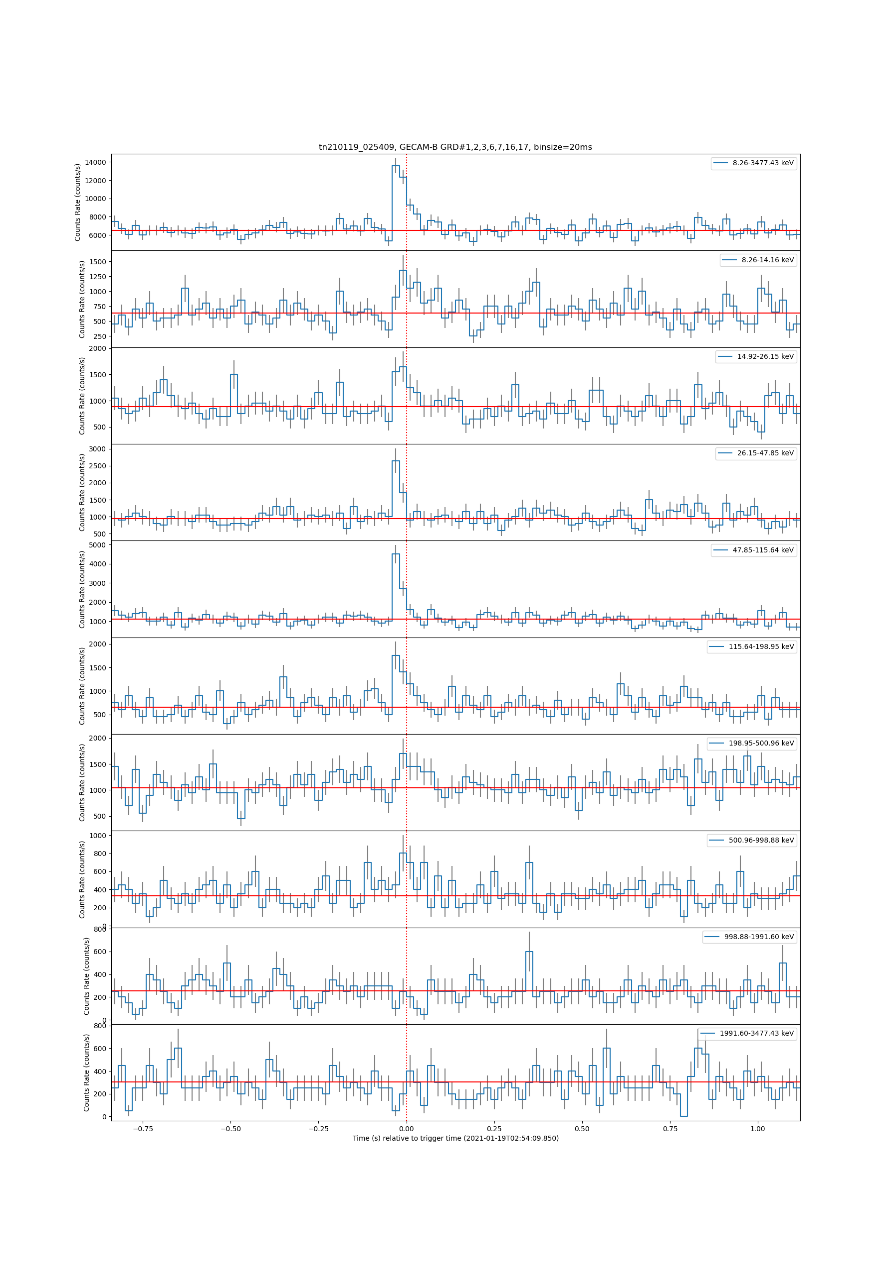Highlights/News
Chinese Space Telescopes Accurately Measure the Brightest Gamma-ray Burst Ever Detected
2023-03-28
At 2 a.m. of March 29, 2023 (Beijing Time), the Institute of High Energy Physics (IHEP) of Chinese Academy of Sciences (CAS), together with some 40 research institutions worldwide, released their latest discoveries on the brightest Gamma-Ray Burst (dubbed as GRB 221009A) ever detected by human. With the unique observations made by two Chinese space telescopes, namely Insight-HXMT and GECAM-C, scientists were able to accurately measure how bright and how much energy released by this burst, which is the key to understand this historical event.
For this historic gamma-ray burst, another ground-based facility led by IHEP, namely Large High Altitude Air Shower Observatory (LHAASO), carried out joint observation with Insight-HXMT and the GECAM-C telescopes. LHAASO made several important first discoveries with its large amount of very high energy observation data, which will be reported later.
As the most energetic explosion phenomenon in the universe, GRBs could be produced by the core collapse of a massive star, which typically lasts longer than two seconds, or the merger of two compact stars, such as neutron stars and black holes, which typically lasts less than two seconds and usually emits gravitational waves. GRB 221009A belongs to the former.
With the Insight-HXMT and GECAM-C space telescopes, an IHEP-led international team with researchers from over 30 institutes from China, USA, Italy, France and Germany, made accurate measurements of the prompt emission and early afterglow of this unprecedented burst in the hard X-ray and soft gamma energy bands.
When this GRB arrived, GECAM-C operated in a special observation mode which is capable to record extremely bright GRBs, just like the brightest part of GRB 221009A, while many other space telescopes had problems to measure such bright event.
"Based on the accurate data obtained by GECAM-C, we found that this burst set new records on both the observed brightness and the isotropic-equivalent energy of all detected bursts, making this burst really exceptional", said Prof. XIONG Shaolin, the Principal Investigator of GECAM-C who led this study. "This burst is 50 times brighter than the last record-holder, and the isotropic-equivalent energy of this burst is more than 10^55 erg, which is about the total rest mass energy of 8 solar masses. Such a huge energy was released just within about 1 minute in time."
Insight-HXMT is China's first X-ray space telescope which is designed to observe the X-ray source in the Milky Way. However, it was extended to monitor gamma-rays in all-sky especially GRBs. "Insight-HXMT made a clear measurement of GRB 221009A for its precursor and early afterglow, thanks to its very large detection area in MeV energy range.", said Prof. ZHANG Shuangnan, the Principal Investigator of Insight-HXMT in the IHEP. He added that "Luckily we have Insight-HXMT and GECAM-C complementary to each other, so that we can have a full picture of this precious burst."
According to the joint observation by Insight-HXMT and GECAM-C, the early afterglow of GRB 221009A appeared to switch from slow decay to rapid decay very early in time, meaning that this burst launched an extremely narrow and luminous jet directly pointing to us.
"These findings shed new light on the physics of these energetic explosions in the universe." said Prof.ZHANG Bing, the University of Nevada, Las Vegas, who led the theoretical interpretation in this work. "More detailed modeling is needed to understand how GRB engines manage to collimate the jets to produce such a huge isotropic equivalent energy in some cases."

Fig 1. Illustration of the Insight-HXMT and GECAM-C observations of the brightest gamma-ray burst (GRB 221009A).(Image by IHEP/HXMT&GECAM Team)

Fig 2. Illustration of the brightest GRB 221009A.(Image by IHEP/HXMT&GECAM Team)
Contact Information
Mr. GUO Lijun
ljguo@ihep.ac.cn

